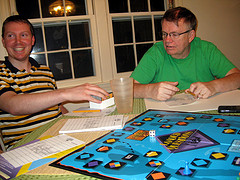It must have been a devastating setback. The year was 1934, in the depths of the Great Depression. Charles Darrow was unemployed, but he had an idea – a board game called Monopoly. He believed the game could lead to financial success and help him overcome the challenges of the depression. Darrow approached the renowned Parker Brothers game company to publish and help him market his creation.
Parker Brothers agreed to evaluate Darrow’s board game but were not impressed. Founded in 1883 by 16-year-old George Parker, the game publishing company had been producing and marketing games and puzzles for 51 years. They had experienced both success and failure and knew the game industry well. Representatives of the giant game company found 59 reasons why they didn’t think Darrow’s game would be successful.
Charles Darrow, however, refused to accept their opinion. He believed in his idea and decided to publish Monopoly himself, selling it through department stores. He had 5,000 copies of the board game printed.
Hope was scarce during the harsh Christmas of 1934, and money was even scarcer. Despite this, Monopoly became a hit. Almost all 5,000 copies sold, and within a year, Parker Brothers were publishing the game. By 1936, it was the best-selling game in America.
Monopoly is now published in 89 languages, and over 220 million copies have been sold. More than 500 million people have played the game, and it has been adapted into an electronic version. Monopoly remains the best-selling board game of all time.
Compared to other popular board games, Monopoly is a relatively recent arrival. The oldest known board game is called “The Royal Game of Ur” or the “Game of 20 Squares.” Discovered in a 4,500-year-old tomb in southern Iraq, the game was played throughout the Middle East for possibly 1,000 years or more. The rules of the game, preserved on cuneiform tablets, allow modern game enthusiasts to play this ancient game, although it has long faded from popular memory.
Perhaps the oldest board game still popular today is chess, which first appeared in India around the 6th century A.D. By the year 1000, it had spread throughout the Middle East and Europe. The rules and game board have evolved somewhat over the centuries, but the game remains fundamentally the same as the ancient Indians played it. They could hardly have imagined the world-class chess matches or electronic versions of the game we enjoy today.
Another ancient but popular board game is checkers, also known as draughts. A form of checkers was played by Egyptian Pharaohs as early as 1600 B.C. The game has evolved over time, with the 12th-century adaptation to the 64-square chessboard and the addition of capture rules 400 years later, resulting in the game we know today.
It’s impossible to determine how many copies of chess or checkers have been sold or how many people have played these games, but the numbers would undoubtedly be staggering if known.
Other top-selling board games include Yahtzee, Scrabble, Mahjong, Trivial Pursuit, Battleship, and Risk. All of these games were developed during the 20th century and continue to be popular sellers.
These popular board games share several common traits. Many of them involve specific strategies of play. When these strategies are used effectively, the games become enjoyable, challenging, and highly rewarding as players attempt to capture portions of the board and outsmart one another. Another common element in almost all of these board games is probability or chance. Luck is often introduced by drawing cards or rolling dice, creating opportunities for even more diverse strategies of play. A final important characteristic of these games is that, in one way or another, they reflect life lessons. They teach competition and sportsmanship, as well as strategy and the importance of never giving up.
Perhaps this is why Charles Darrow was so drawn to Monopoly. He believed that success comes from applying sound strategies to pursue a dream and never giving up. We are grateful that Darrow didn’t give up, and we appreciate that he didn’t discard the board game with 59 issues as he left the Parker Brothers factory in 1934.
Manuel Marino is a seasoned Senior Producer, Music Composer, and Artist with over a decade of experience. He specializes in branded entertainment across various mediums, including video games, films, and advertising campaigns. With 20+ years as a game music composer, Manuel has worked on numerous platforms, creating diverse orchestral soundtracks. HIRE ME


 Manuel is a passionate, driven, and techsavvy AV technician,
Manuel is a passionate, driven, and techsavvy AV technician, 
